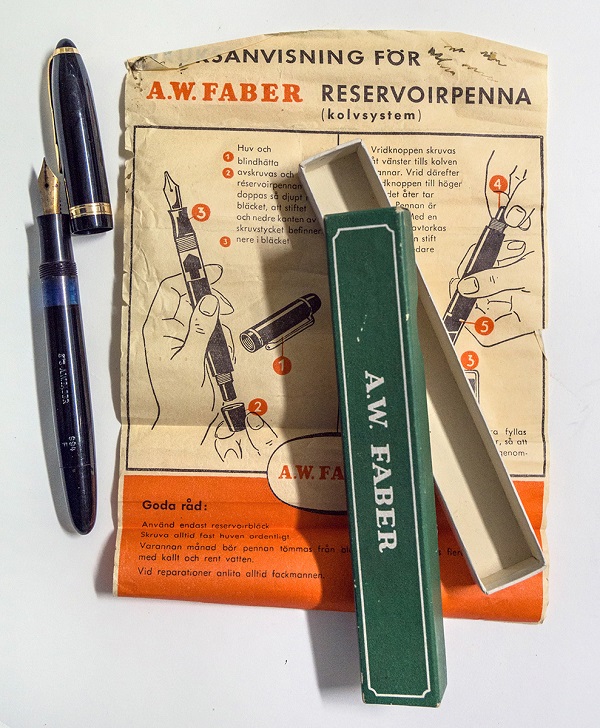How the industrial revolution changed writing culture
Documents written centuries ago are fascinating, revealing not only the thoughts of those who wrote them but a history of how they were written. This blog looks at the changes in the way we have expressed our thoughts through the written word since the industrial revolution.

The industrial revolution brought about a shift from an economy based on agriculture and handicrafts to one focused around large industries and factory systems. Alongside this, increased need for written documentation developed. During this period, new technologies and materials changed writing practices, in private as well as in the workplace.
Writing with quills
For centuries, feathers had been the most popular writing tool. However, writing with feathers was not easy.
Turning a feather into a working quill required other tools, such as a small knife to cut the feather and produce its narrow end. Writers need to sharpen the point and remove the hollow shaft inside. This required care, as feathers tend to break easily. Additionally, writers needed sand and ink, and an inkstand to store them in. Why sand? To blot the page after writing.
RELATED: Read our blog: Reading habits in the past
Enter the pen
Until the 19th century, the quill was the most common writing instrument. It was replaced by factory-manufactured dip pens with steel nibs. Pens were less fragile than quills, and retained their sharp edges for longer. Extra equipment was still required: a holder for nibs of different shapes or sizes, pots of ink and sand.
Mass-produced steel nibbed pens were affordable for large parts of European society, making writing accessible to many people for the first time. Birmingham was a centre for pen production, producing more than half of the world’s steel nibs.
The fountain pen
Fountain pen, Faber with box and manual, 1890s, Sörmlands museum, CC BY-SA
(A. W. Faber was the name of today’s Faber-Castell until 1900 - they still manufacture pens).
From the 1880s onwards, fountain pens became a worldwide success.
Ink was not free-flowing in steel-nibbed pens, posing a problem for manufacturers. Fountain pens, on the other hand, had an inner reservoir of ink, removing the messy process of unscrewing the inkstand and dipping the nib into ink. Nevertheless, they still required an ink pot to fill up the inner reservoir.
‘Write with Remington’: the invention of the typewriter
Despite advancements in pen design, factories and companies’ need for faster and more efficient communication grew during the 19th century.
The advert above reads ‘Empty your inkpots, break your pens, and write with Remington’, reflecting one of the first and major shifts from handwriting to typing. The invention of the typewriter revolutionised the speed at which information could be put on paper. In 1853 the record for writing with a pen was set at 30 words per minute; at the same time, stenographers and telegraphs could already achieve 130 words per minute.
RELATED: Explore more historic typewriters on Europeana
The typewriter solved time-efficacy problems in businesses worldwide, bringing a new writing culture that no longer needed handwriting.
Typing machines developed throughout the 19th century. The first commercially successful typewriter was the “Sholes and Glidden Type-Writer”. E. Remington and Sons acquired the patent for this typewriter in 1873. Their “Remington No. 2” had the first QWERTY keyboard for the Latin alphabet and, due its international success, it remains widely used.
RELATED: Read our blog Europe’s First Printed Book
Typing today
For decades, typewriting has been the most common method of written communication in business. Even today, people worldwide experience the typewriter’s heritage in their physical or digital keyboards, laptops and smartphones.
RELATED: Explore this gallery of alphabets
Although the machines that we type our thoughts into have become digital, the heritage of the way we write in our offices, schools and everyday lives was shaped by inventions long ago.
By Larissa Borck, Swedish National Heritage Board
Europe at Work - Share your story
Did you or your family use any of these writing tools in your work? Share your story and help us tell the story of Europe through our working lives in the past and the present.
This blog post is a part of the Europeana Common Culture project, which explores varied aspects of our shared cultural heritage across Europe.
Feature image: Tintengeschirr (Inkstand), 1750-1800, Museumsdorf Cloppenburg - Niedersächsisches Freilichtmuseum, CC BY-NC-SA


